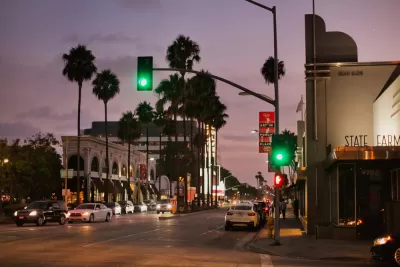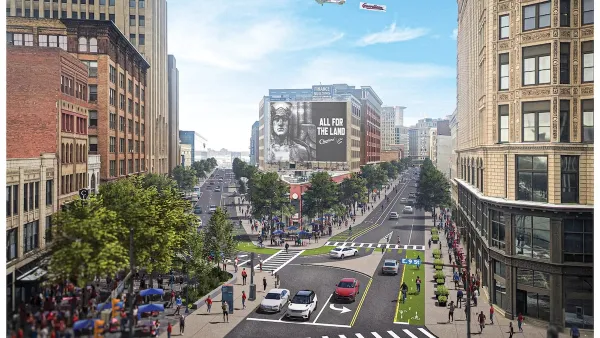The small Los Angeles County city could remove 1.3-miles of protected bike and bus lanes installed during the Covid-19 pandemic.

In an opinion piece in the Los Angeles Times, Yotala Oszkay Febres-Cordero calls on the small city of Culver City, on Los Angeles’ west side, to continue the Move Culver City pilot project, which installed 1.3 miles of protected bike and bus lanes in the city’s downtown.
For Oszkay Febres-Cordero, removing the protected lanes, a move favored by some conservative city council members, would be “a devastating setback, not just for those of us who use the lanes but also for how Angelenos see the future of transportation in our region.”
The op-ed addresses common concerns, such as traffic. “Drivers complain that the bus and bike lanes slow down traffic on the street. But the lanes don’t do so by much: According to the report, during peak afternoon traffic, travel time in a car has increased by a maximum of two minutes compared with a 2019 baseline.”
Protected bus lanes can also address transportation equity. “Many people riding the bus in L.A. County are not doing so on principle or because it’s fun, but because it’s the most viable option for them. A bus lane makes their lives better too.”
Oszkay Febres-Cordero holds city council members responsible for improving transportation for all residents. “Council members are the decision makers. If bus service is not up to par to maximize the protected lane, then it is on them to make it better. If the project lacks support, then they need to invest in the service frequency, reliability and connectivity to strengthen the ridership and thus the buy-in.”
FULL STORY: Opinion: Cars don’t have to rule Culver City, or the future of L.A. transit

Planetizen Federal Action Tracker
A weekly monitor of how Trump’s orders and actions are impacting planners and planning in America.

Congressman Proposes Bill to Rename DC Metro “Trump Train”
The Make Autorail Great Again Act would withhold federal funding to the system until the Washington Metropolitan Area Transit Authority (WMATA), rebrands as the Washington Metropolitan Authority for Greater Access (WMAGA).

DARTSpace Platform Streamlines Dallas TOD Application Process
The Dallas transit agency hopes a shorter permitting timeline will boost transit-oriented development around rail stations.

San Francisco's School District Spent $105M To Build Affordable Housing for Teachers — And That's Just the Beginning
SFUSD joins a growing list of school districts using their land holdings to address housing affordability challenges faced by their own employees.

Car-Centric LA Suburb Looks to a Train-Oriented Future
City leaders in Rancho Cucamonga, the future western terminus of the Brightline West rail line to Las Vegas, want to reimagine the city as a transit-oriented, pedestrian-friendly community.

New Alaska Bitcoin Mine Would Burn as Much Energy as the State’s Largest Coal Plant
Fueled by “stranded” natural gas, the startup hopes to become the largest in the US, and to make Alaska an industry center.
Urban Design for Planners 1: Software Tools
This six-course series explores essential urban design concepts using open source software and equips planners with the tools they need to participate fully in the urban design process.
Planning for Universal Design
Learn the tools for implementing Universal Design in planning regulations.
Municipality of Princeton
Roanoke Valley-Alleghany Regional Commission
City of Mt Shasta
City of Camden Redevelopment Agency
City of Astoria
Transportation Research & Education Center (TREC) at Portland State University
US High Speed Rail Association
City of Camden Redevelopment Agency
Municipality of Princeton (NJ)




























